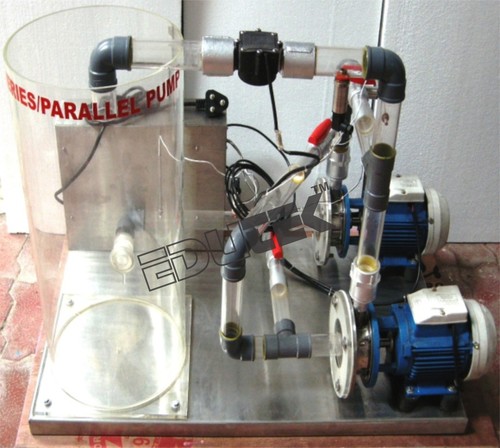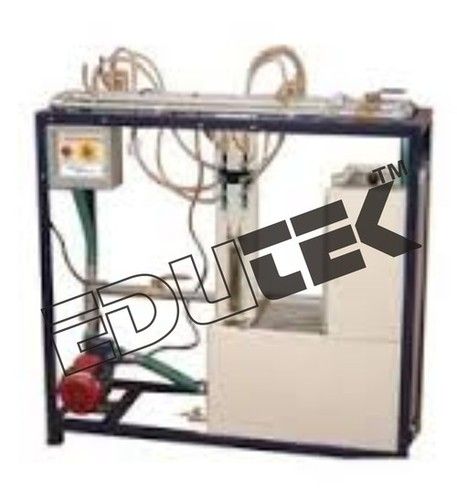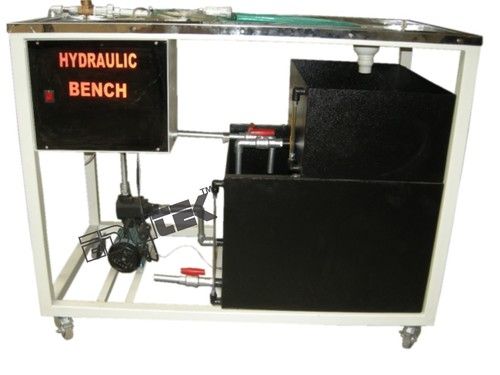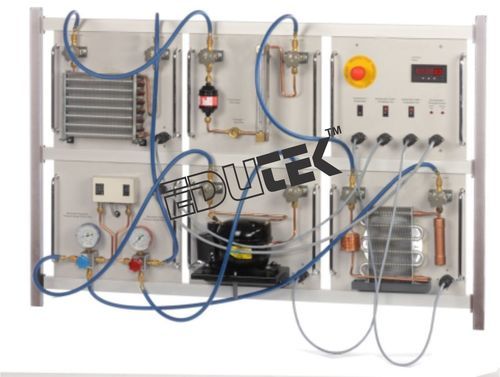Series And Parallel Configuration Of Pumps
Product Details:
X
Product Description
SERIES AND PARALLEL CONFIGURATION OF PUMPS
Two motor-driven centrifugal pumps, mounted on a stainless steel plinth with a water reservoir and pipework for continuous circulation. The pumps can be configured for single pump operation, two pumps in parallel or two pumps in series by using manually operated ball valves. Similarly, manual valves are used to control the flow and facilitate the study of suction effects, including demonstration of air release.
In parallel operation the two pumps draw from a shared inlet pipe of a wider diameter than the pump inlet, reflecting a typical industrial configuration of parallel pumping. Each pump has impellers that can be easily accessed and replaced without tools. delivered with three impellers in total, one with forward curved blades and two with backward curved blades, allowing the students to investigate the effects of impeller characteristics.
Learning Objectives / Experiments
- Investigation of pumps in series and parallel configuration
- Determining the head
- Recording the pump characteristics
- Determining the hydraulic power
- Determining the operating point
Specification:
- Investigation of series and parallel configuration of pumps
- Two identical centrifugal pumps
- Transparent tank as intake tank
- Overflow in the tank ensures constant suction head
- Ball valves used to switch between series and parallel operation
- Manometers at inlet and outlet of each pump
- Flow rate determined by base module
- Water supply via base module or via laboratory supply
Technical Data:
- 2x centrifugal pump
- power consumption: 370W
- max. flow rate: 21L/min
- max. head: 12m
- Tank: 13L
Pipes and pipe connections: PVC
Measuring ranges:
- Pressure (inlet): 2x -1...1,5 bar
- Pressure (outlet): 3x 0...2,5 bar
Dimensions and Weight:
- LxWxH: 1210x610x580mm
- Weight: approx. 58kg
Tell us about your requirement

Price:
Quantity
Select Unit
- 50
- 100
- 200
- 250
- 500
- 1000+
Additional detail
+91
Email
Other Products in 'Fluid Mechanics Lab Equipment' category
"We deal all over World but our main domestic market is South India"
 |
EDUTEK INSTRUMENTATION
All Rights Reserved.(Terms of Use) Developed and Managed by Infocom Network Private Limited. |














